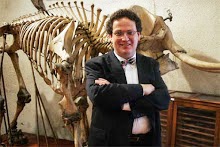It is difficult to save species that we do not know and cannot recognize, and it is impossible to prove to the world that we have. The neglect of taxonomy since the 1940s has had two dramatic and damaging impacts on our prospects for sustainable biodiversity: it has capped the rate at which species are discovered, described, and named to WWII era levels, and it has slowed the production of revisions and monographs so that theories of known species remain untested, unimproved, and non-reflective of the most recent and best evidence.
If we are serious about biodiversity sustainability, and we had better be, then the common sense first step is to support taxonomy to create baseline knowledge of what species exist and where in the biosphere so that we have biological clarity about what it is we seek to see sustained and a fact based basis on which to measure our successes and failures.
Taxonomy remains out of fashion and we now have generations of environmental and even evolutionary biologists who are ignorant of the theories, traditions, history, and scientific rigor of modern taxonomy done well. This bias against taxonomy is as great a challenge and fully as important to the positive outcome of biodiversity sustainability efforts as the sum total of conservation projects around the world. No area of science offers as much return on investment as taxonomy and the field is ripe for investment now. Enabled by the latest advances in cyberinfrastructure, taxonomy is ready, able, and willing to launch the greatest period of species discovery ever seen and to arm society with the fundamental knowledge needed to achieve biodiversity sustainability.
Thursday, August 11, 2011
Subscribe to:
Post Comments (Atom)



No comments:
Post a Comment